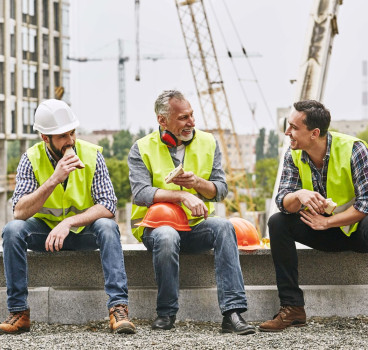The unconventional in Europe’s housing market
Europe's housing market is a complex tapestry woven with diverse trends, challenges, and peculiarities. While headlines often focus on skyrocketing prices and affordability woes, there's a richer story waiting to be unravelled with trends that might surprise you.
1. Tiny Homes, Big Impact: Forget McMansions, the continent is witnessing a surge in tiny homes. Driven by sustainability concerns, affordability, and minimalist living philosophies, countries like France, Germany, and the Netherlands are seeing a rise in micro-dwelling communities and innovative modular designs. Statistics show a 40% rise in tiny home registrations in France alone between 2019 and 2022 (French Tiny House Association).
2. Co-living: Sharing is the New Owning: Millennials and Gen Z, strapped with high housing costs, are embracing co-living arrangements. These shared living spaces offer private bedrooms with communal kitchens, living areas, and sometimes even co-working spaces. The co-living market in Europe is expected to reach €26 billion by 2025 (Allied Market Research), with Germany and the UK leading the charge.
3. The Silver Tsunami and Reverse Mortgages: Europe's aging population is presenting a unique housing challenge. With a growing number of seniors wanting to age in place, reverse mortgages are gaining traction, allowing homeowners to access equity in their homes for living expenses. The reverse mortgage market in Europe is projected to reach €116 billion by 2030 (Market Research Future), with Spain and Italy seeing significant growth.
4. Rural Regeneration: Back to the Countryside? As remote work becomes more prevalent, some European countries are experiencing a "rural renaissance." Young families and professionals are drawn to the affordability, slower pace of life, and access to nature offered by rural areas. This trend is particularly evident in Ireland, where remote work visas have sparked a surge in rural relocations.
5. Alternative Ownership Models: Beyond Bricks and Mortar? Innovative ownership models are disrupting the traditional landscape. Fractional ownership, where multiple individuals co-own a property, allows access to high-value locations at lower costs. Blockchain technology is also being explored for property fractionalisation and secure transactions. While still in its nascent stage, these models could reshape the European housing market in the future.
A Country-by-Country Snapshot:
- Germany: Europe's powerhouse faces a rental affordability crisis, particularly in major cities. Rent control measures and government initiatives to build more affordable housing are being debated.
- France: While Paris grapples with skyrocketing prices, smaller cities are witnessing a "flight to affordability." The government is also pushing for denser urban development to address housing shortages.
- Spain: After the 2008 housing crisis, Spain is cautiously recovering. Rising tourism and remote work opportunities are driving demand in coastal areas, while affordability concerns remain in major cities.
- Italy: Abandoned villages ( see image above) and historic town centres are being regenerated to attract new residents and boost tourism. Meanwhile, major cities like Milan struggle with high housing costs.
- Eastern Europe: Countries like Poland and Hungary are experiencing strong economic growth, leading to rising housing demand and prices. However, affordability remains a concern for many residents.
Challenges and the Road Ahead:
The European housing market faces significant challenges, including rising construction costs, limited land availability, and socio-economic inequalities. Addressing these challenges requires innovative solutions, government intervention, and a holistic approach that considers social, economic, and environmental factors.
Europe's housing market is a dynamic and complex ecosystem, far more nuanced than just statistics and price charts. By exploring unconventional trends and country-specific nuances, we gain a deeper understanding of the forces shaping this vital sector. As Europe navigates the challenges ahead, embracing innovative solutions and diverse ownership models
Additional Articles

Why everyone has a favourite skip and what it says about you
In construction, there are two universal truths – tea, of course, is essential and believe it or not, everyone - whether they are prepared to admit it - has a favourite skip. It may sound strange,...
Read moreThe cultural significance of the bacon roll in UK construction
Walk onto any construction site in the UK at 7:30am and you’ll quickly discover that the most important piece of equipment isn’t a digger, a drill or a laser level. It’s a humble, foil-wrapped,...
Read more

Check out the odd things unearthed on construction sites
Dig deep enough on a construction site and you might be amazed at what you find. In fact, if there is anywhere destined to uncover hidden treasures, you are in the right place. Large-scale ground...
Read more